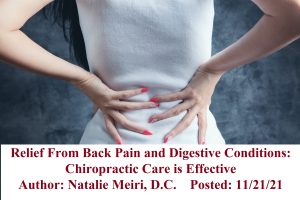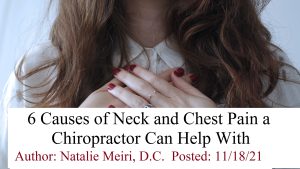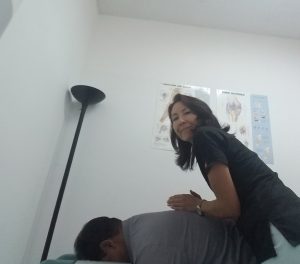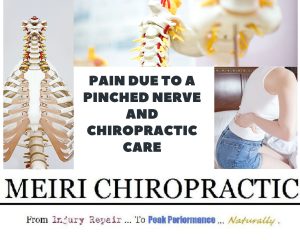
The holiday season is here. This is a joyful time of year to be with our family and friends. However, if you are eating too much or traveling too much, it can get your body run down. Some find the cold weather causes musculoskeletal pain and discomfort. Other patients have reported a neck and back injury from a “great, big unexpected hug”! Moreover, patients reported the stress of figuring out what to give as a gift? Here’s why you should give the gift of health with chiropractic this holiday season for your family and friends…or even for yourself!
Regular Chiropractic Care Improves Your Overall Health
Pain relief isn’t the only thing chiropractic care is good for. The immune system is also improved with regular visits to your family chiropractor. The brain and the spinal cord control your central nervous system, which controls every function of your body. Your family chiropractor can put you back in alignment with adjustments. So regular adjustments to your spine will get your nervous system functioning at it’s optimal level. And the nervous system affects the body’s ability to fight disease through your immune response.
Furthermore, the nervous system also communicates with the endocrine system to maintain a state of homeostasis. Homeostasis is the optimal state of steady internal, physical, and chemical conditions maintained by your body. The endocrine system is a series of glands that produce and secrete hormones that the body uses to control and coordinate your body’s metabolism, energy level, reproduction, growth and development, and response to injury, stress, and mood.
Regular Chiropractic Care Reduces Your Stress Level
Additionally, getting regular chiropractic care can help reduce your stress level. As you can see in the connections in the body described above, chiropractic adjustments play a role in even hormonal and sleep regulation. Chiropractic adjustments may not be able to remove the stressful holiday triggers, but it can help your body cope. By eliminating much of the tension that builds in the spine, chiropractic adjustments can remove the stress by taking pressure off your nerves.
Chiropractic is safe, natural and cost effective
Conventional medical drugs offer temporary alleviation of most musculoskeletal symptoms, while covering up the underlying causes and potential cure of these conditions. Only covering up the symptoms of these conditions with drugs instead of treating them, can worsen the problem and/or possibly lead to needing surgery. Chiropractic treats the root cause, decreasing stiffness, inflammation and pain. Chiropractic can offer real and lasting cures to get rid of neuromusculoskeletal pain by improving function naturally without drugs or surgery.
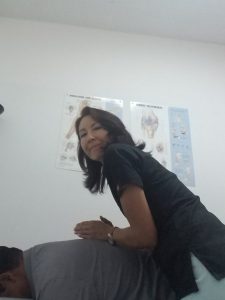
The Research Shows
The following is some research that backs up the enormous benefits of chiropractic medicine:
Patients who saw a chiropractor as their initial provider for low back pain (LBP) had 90% decreased odds of both early and long-term opioid use.
Researchers analyzing the prevalence, patterns and predictors of chiropractic utilization in the U.S. general population found that, “Back pain and neck pain were the most prevalent health problems for chiropractic consultations and the majority of users reported chiropractic helping a great deal with their health problem and improving overall health or well-being.”
“Chiropractic Manipulative Therapy in conjunction with standard medical care offers a significant advantage for decreasing pain and improving physical functioning when compared with only standard care (conventional care), for men and women between 18 and 35 years of age with acute low back pain.”
Older Medicare patients with chronic low back pain and other medical problems who received spinal manipulation from a chiropractic physician had lower costs of care and shorter episodes of back pain than patients in other treatment groups. Patients who received a combination of chiropractic and medical care had the next lowest Medicare costs, and patients who received medical care only incurred the highest costs.
Weeks et al (2016), Journal of Manipulative and Physiological Therapeutics
Chiropractic “manipulative therapy improves the function of the musculoskeletal system, which then causes a change in the input from the nervous system, which in turn may have a positive effect on other neuromusculoskeletal tissue, organ dysfunction, tissue pathologic condition, or symptom complex. Reflex mechanisms that support these ideas have indeed been documented…” (1)
Haldeman S, Modern developments in the principles and practice of chiropractic, 1980 (1)
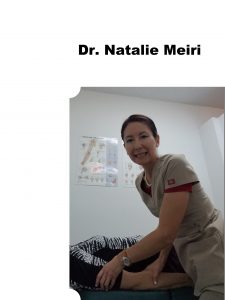
Black Friday is over…Are you still looking for a perfect gift this holiday season? Why not give the gift of health with Chiropractic this holiday season? Call Dr. Natalie Meiri at 561-253-8984 today to make an appointment.
References:
(1) Sato A: Physiological studies of the somatoautonomic reflexes. In Haldeman S, editor: Modern developments in the principles and practice of chiropractic, East Norwalk, CT, 1980, Appleton Century-Crofts.
Meiri Chiropractic
561-253-8984
